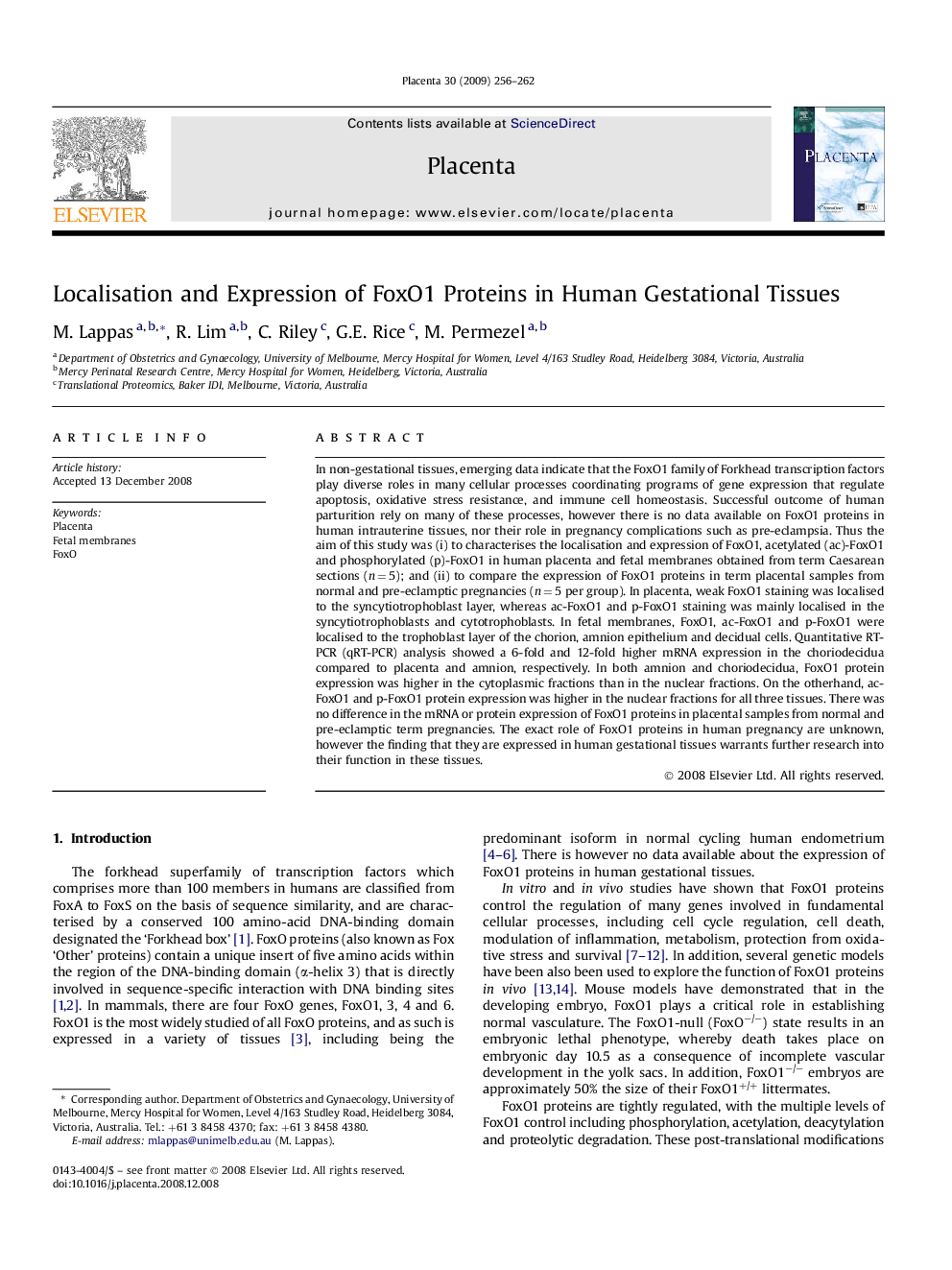| Article ID | Journal | Published Year | Pages | File Type |
|---|---|---|---|---|
| 2789926 | Placenta | 2009 | 7 Pages |
In non-gestational tissues, emerging data indicate that the FoxO1 family of Forkhead transcription factors play diverse roles in many cellular processes coordinating programs of gene expression that regulate apoptosis, oxidative stress resistance, and immune cell homeostasis. Successful outcome of human parturition rely on many of these processes, however there is no data available on FoxO1 proteins in human intrauterine tissues, nor their role in pregnancy complications such as pre-eclampsia. Thus the aim of this study was (i) to characterises the localisation and expression of FoxO1, acetylated (ac)-FoxO1 and phosphorylated (p)-FoxO1 in human placenta and fetal membranes obtained from term Caesarean sections (n = 5); and (ii) to compare the expression of FoxO1 proteins in term placental samples from normal and pre-eclamptic pregnancies (n = 5 per group). In placenta, weak FoxO1 staining was localised to the syncytiotrophoblast layer, whereas ac-FoxO1 and p-FoxO1 staining was mainly localised in the syncytiotrophoblasts and cytotrophoblasts. In fetal membranes, FoxO1, ac-FoxO1 and p-FoxO1 were localised to the trophoblast layer of the chorion, amnion epithelium and decidual cells. Quantitative RT-PCR (qRT-PCR) analysis showed a 6-fold and 12-fold higher mRNA expression in the choriodecidua compared to placenta and amnion, respectively. In both amnion and choriodecidua, FoxO1 protein expression was higher in the cytoplasmic fractions than in the nuclear fractions. On the otherhand, ac-FoxO1 and p-FoxO1 protein expression was higher in the nuclear fractions for all three tissues. There was no difference in the mRNA or protein expression of FoxO1 proteins in placental samples from normal and pre-eclamptic term pregnancies. The exact role of FoxO1 proteins in human pregnancy are unknown, however the finding that they are expressed in human gestational tissues warrants further research into their function in these tissues.
